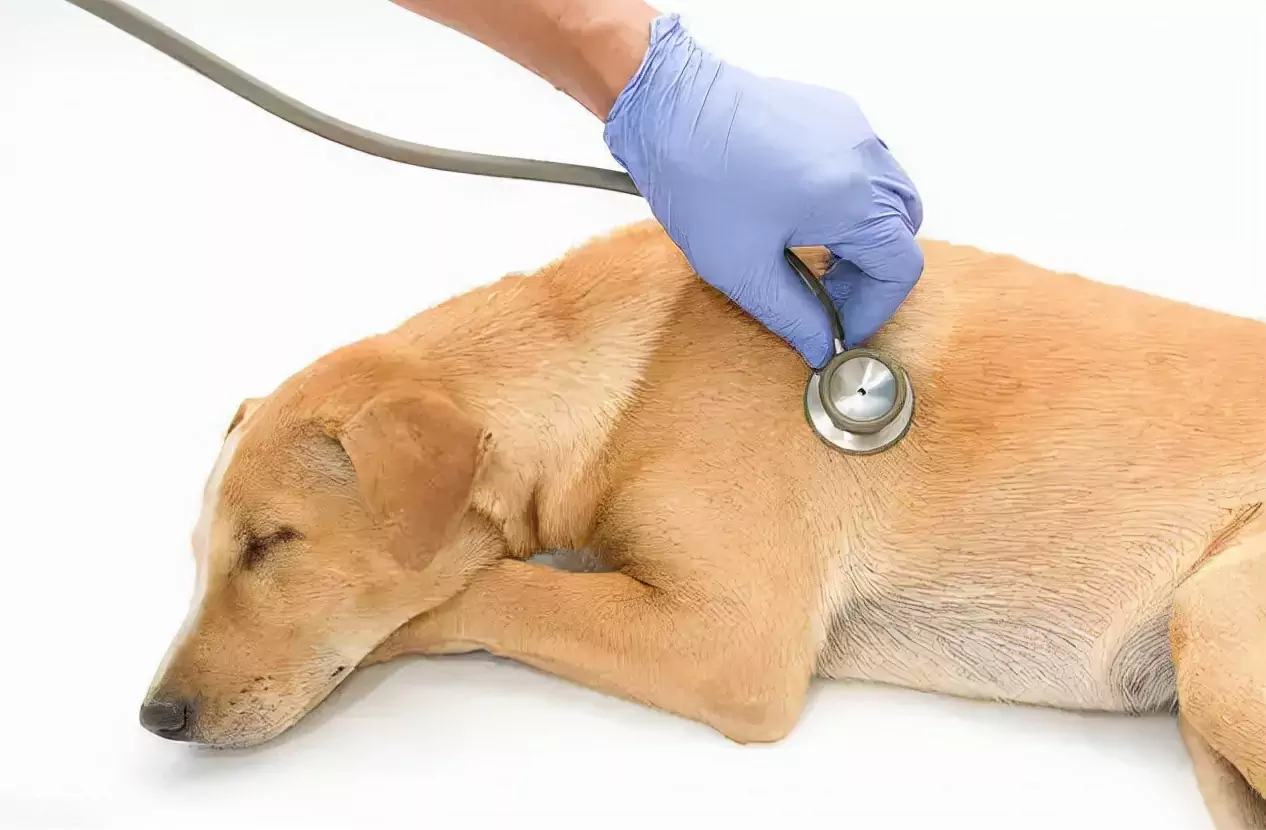How can dogs have hookworms? The causes of hookworm disease
2022-07-01
How do dogs get hookworms
The common pathogens that cause hookworm disease in dogs are hookworm in dogs and hookworm in narrow heads. Canine hookworm eggs are excreted in the feces and, under suitable conditions, hatch as larvae in 12-30 hours and metamorphose into infective larvae in about 1 week. Dogs are usually infected through the mouth, but can also be infected through the skin and oral mucosa. When the larvae enter the host body through the mouth, they remain in the intestine, shed their cyst sheaths and gradually develop into adults. When the larvae enter through the skin, they burrow into the peripheral blood vessels, migrate to the alveoli and trachea, enter the oral cavity with sputum, swallow, and develop into adults in the small intestine. Canine hookworms can also be infected through the placenta and colostrum.
Hookworm disease is a more frequent and serious nematode disease in dogs. Hookworms are found in the small intestine, mainly the duodenum. It occurs throughout the country. It is common in warm climates and occurs most often in the summer, especially in small, moist kennels.

I. Etiology of canine hookworm disease
1. The pathogens that cause canine hookworm disease are commonly hookworm and hookworm of the narrow head.
The eggs are excreted in the feces, and under suitable conditions, the larvae (rod larvae) hatch in 12-30 hours and metamorphose into infective larvae (sheathed filarial larvae) in about 1 week.
3. Dogs are usually infected through the mouth, but can also be infected through the skin and oral mucosa.
4銆乄hen the larvae enter the host body through the mouth, they stay in the intestine, shed their sheaths and gradually develop into adults.
5銆乄hen the larvae invade through the skin, they burrow into the peripheral blood vessels, migrate to the alveoli and trachea, enter the mouth with the sputum, swallow and develop into adults in the small intestine.
6銆丆anine hookworm can also be infected through the placenta and colostrum.
Second, the clinical symptoms of canine hookworm disease
1, severe infection, mucous membrane pale, thinning, coarse and lusterless coat, easy to shed.
2, loss of appetite, heterophilia, vomiting, digestive disorders, alternating episodes of dysentery and constipation.
3, feces with blood or black, in severe cases like tarry, and with putrid odor.
4. if a large number of larvae invade through the skin, the skin becomes inflamed, itchy, some limbs swell, and later break down, or there is vesicular erosion of the corners of the mouth, etc.
5銆丳uppies within 3 weeks of age infected with canine hookworm through the fetus or colostrum can cause severe anemia, leading to coma and death.
III. Prevention and control measures of hookworm disease
1, deworming: commercial preparation of 4.5% iodonitrophenol solution, 1 subcutaneous injection dose of 0.22 ml (10 mg) per kg of body weight, the deworming effect of various hookworms in dogs is close to 100%. In addition, levamisole, mebendazole, thiacil can also be applied to deworming, dosage usage can be referred to the canine roundworm disease.
2. In case of severe anemia, symptomatic treatment is also needed, such as oral or injectable iron-containing tonic or blood transfusion.
3銆丼anitation and disinfection: Keep the kennel clean and dry, and clean up the feces in time. The wooden part of the cage should be scalded with boiling water, the iron part or the ground should be burned with blowtorch, and the movable utensils can be moved to outdoor exposure to kill the eggs of the worms.
Understanding the risk of infection of individual parasites
Parasites look similar, and to find out which one is afflicting your dog, you need to figure out how each one is transmitted.
Roundworms are typically passed from an infected female dog to her puppy. Their eggs and larvae can cross the placenta and infect puppies in the womb, and the eggs can also leach into the milk produced by the mother dog. Therefore, you should deworm your puppy regularly.
Tapeworms are usually transmitted by dogs swallowing vermin infected with tapeworms (such as rats) or by fleas carrying tapeworm eggs. Therefore, hounds or dogs infested with fleas are most likely to be infected with tapeworms.
Hookworms and whipworms grow in moist soil, and dogs that run on grass frequently are most susceptible (especially in warm, humid climates). Dogs that live in kennels and spend time on public grass are most often infected with these parasites.
Canis lupus is transmitted by insects such as mosquitoes and is commonly found in areas where mosquitoes are prevalent. High-risk areas include the southeast and midwest United States, the Atlantic coast, Australia, Japan, China, Southeast Asian countries, and western and southern Africa.
Lung nematode infections are becoming increasingly common and are transmitted via fox feces, slugs, and snails. Infection is possible with contact with any of the hosts.
Watch out for symptoms
Most of the symptoms of parasitic infections are very common and not obvious. So you can't diagnose which parasite your dog has based on the symptoms. However, if your dog has not been dewormed recently, there are some signs of infection that are worth looking out for, and then further confirmation of the type of parasite.
Checking for parasites in the feces
Sometimes you may find evidence of parasites in the feces even if your dog is not showing signs of infection. If you are not sure which parasite is present, collect it in a container with a threaded lid and take it to your veterinarian's office for identification.
It is difficult to distinguish the appearance of most parasites with the naked eye, so it is more helpful to your veterinarian to collect them than to describe them verbally.
Identifying gastrointestinal signs
Although all parasites have different life cycles, they will all move through the intestines at some point. If the numbers are low, the dog may not show any signs. If the numbers are high, they can irritate the intestinal lining and cause nausea and vomiting, diarrhea (with mucus, blood or both), loss of appetite and weight loss.
Collection of stool samples
Regardless of whether the parasite resides or migrates in the intestine, some eggs will be excreted in the dog's feces and continue the life cycle. If the numbers are high, you will see actual parasites in the feces. With only a mild infection, the feces rarely show parasites, but there may be eggs or larvae that are difficult to detect with the naked eye.
Use a popsicle stick or disposable spoon to scoop up a small amount of feces and place it in a clean screw-top container with a tight-fitting lid. If you cannot find a suitable container, you may wish to ask your veterinarian for a special container.
Store the sample below 30 degrees Celsius and take it to the veterinary clinic only when convenient. Feces for checking for parasites do not need to be particularly fresh.
If your veterinarian requires a mixed sample, you will have to collect your dog's feces once a day for 3 consecutive days and place it in the same container. This is to avoid a "false negative" result. The results of a mixed sample are more reliable.
Your veterinarian may perform fecal microscopy, where a small amount of feces is applied to a slide and examined under a microscope to look for parasite eggs or larvae, or sent to an outside laboratory for examination.
What signs of worms in a dog
What are the signs of worms in a dog? It is important to know that there are many types of parasites, and today we will use a few common ones as examples to illustrate to you. The first is trichomonas. Dogs infected with trichomonas will have perennial diarrhea. The most visible signs are the dog's increasing weight loss and even blood in the stool. Trichomonas is most likely contracted from drinking unclean water while your dog was playing outside. Then there are roundworms. If your dog has a large stomach but is losing weight, vomiting and has blood in his stool, then he is probably infected with roundworms. Lastly, nematodes. If your dog has a loss of appetite or even epileptic spasms, it is likely to be infected with nematodes.
If you are an attentive pooper scooper and can detect some unusual symptoms in your dog in time. Then the dog is lucky to have a pooper scooper like you! Of course, once we find out that the dog is parasitized by the parasite, we should choose the dewormer as soon as possible to deworm them. Because my dog has been using Super Credible for a long time, I feel that it works pretty well. After all, pooper scoopers are not professional veterinarians and to a large extent cannot tell whether the dog is parasitized inside or outside the body. Most people's wallets do not support frequent trips to the hospital for treatment. The Super Trust is a good choice to treat and prevent some of the internal and external parasite infestations in your pet. Super Trusty is also a beef flavored chewable tablet that does not create a strong sense of resistance when you give your dog medicine. What's more convenient is that the pooper scooper only needs to feed the dewormer once a month, and the super trustworthy can protect the dog for a whole month for the pooper scooper.
#
Parasite
#hookworm canis
#infection
#larva
#veterinary
#deworming
#transcutaneous
#Ascaris lumbricoides
#symptoms
Was this article helpful to you?
Other links in this article
português (Brasil):
Como os cães podem ter ancilóstomos? As causas da doença do ancilóstomo
中文简体:
狗怎么会有钩虫?钩虫病的病因
中文繁体:
狗怎么會有鉤蟲?鉤蟲病的病因
Comments

Why is my dog throwing up?

Why does my dog keep coughing?

How many months is a dog pregnant? Signs and Phenomena of Dog Pregnancy

How do dogs grow fleas? Ways to get rid of fleas on dogs

Can dogs get diabetes?

Can dogs be depressed?

Why does my dog keep sneezing? Causes of Sneezing in Dogs

Can dogs catch a cold? Cold and Flu Symptoms in Dogs

What causes heart disease in dogs

Can dogs get urinary tract infections?








